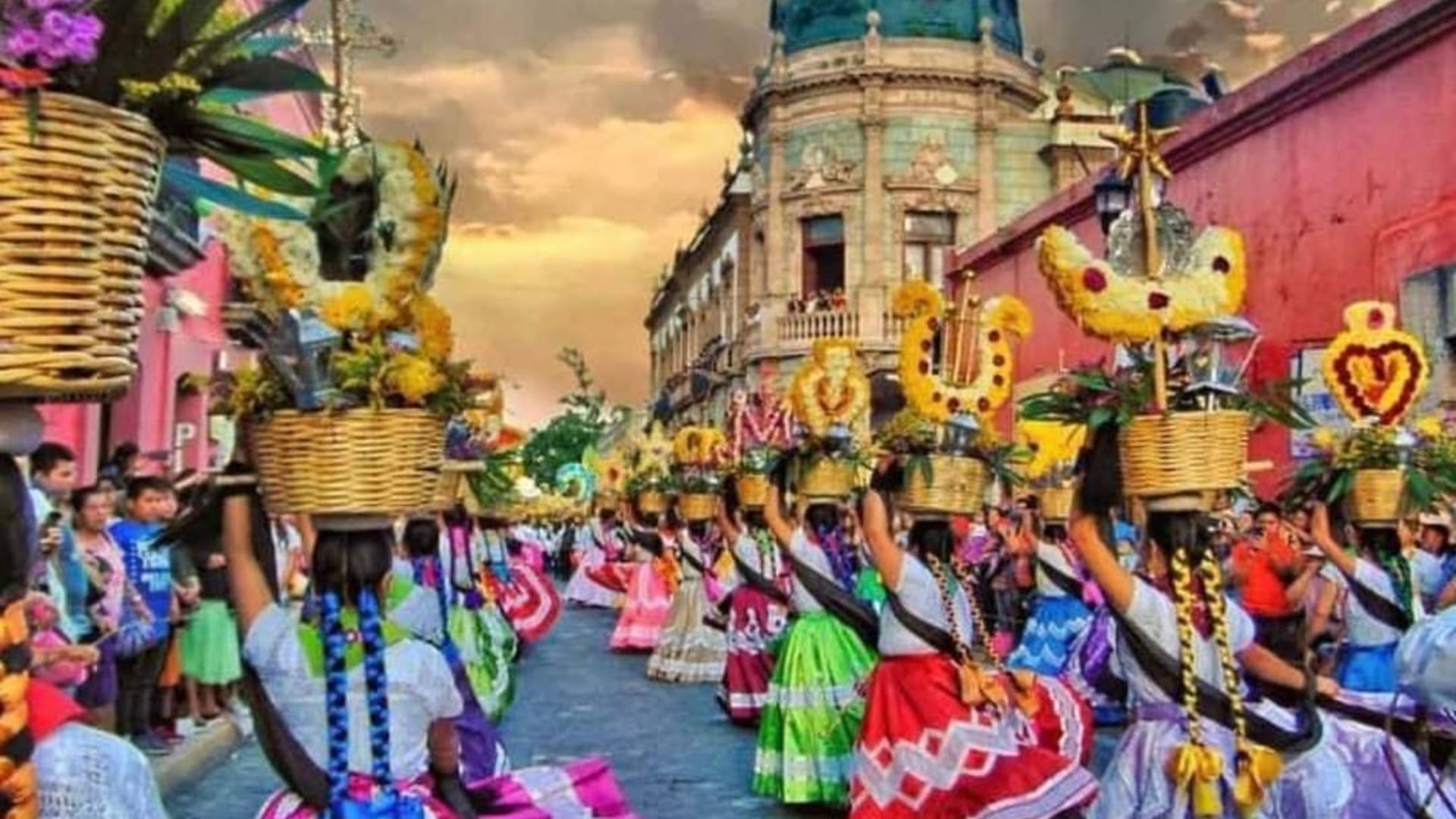Oaxaca: 2025 Guide to What to Do, See, and Eat
Oaxaca: 2025 Guide to What to Do, See, and Eat
This southern Mexican state is a destination that captivates with its cultural richness and gastronomic flavor.
This southern Mexican state is a destination that captivates with its cultural richness and gastronomic flavor.
Oaxaca stands as a cultural treasure of Mexico, where every street, festival, and dish tells a story that connects the past with the present. The diversity of its peoples, the warmth of its people, and the majesty of its colonial architecture make this land a living mosaic of tradition, art, and spirituality.
From the Guelaguetza to its colorful markets, Oaxaca invites you to discover its soul in every corner. Yet, what truly distinguishes this destination is its unmatched cuisine, recognized by UNESCO as Intangible Cultural Heritage of Humanity. Moles, chocolate, mezcal, and tlayudas are more than flavors—they are symbols of identity and ancestral heritage. In Oaxaca, culture and cuisine intertwine to offer a unique sensory experience that captivates every visitor.
Below are some must-see places in Oaxaca for those fortunate enough to explore the state known as the cultural navel” of Mexico.
Mercado 20 de Noviembre
Here you must visit the famous Pasillo de Humo (“Smoke Alley”), where you can taste charcoal-grilled meats such as tasajo, cecina, or chorizo. It’s also a visual experience that fascinates both national and international tourists. Numerous stalls let you choose what to eat, and cooks prepare your meal on the spot, accompanied by a variety of salsas in a charming rustic setting.
- Address: Calle 20 de Noviembre 512, Centro.
Mercado Juárez
Just steps away from Mercado 20 de Noviembre is the equally famous Mercado Juárez, where you can find handicrafts, cheeses, candies, traditional bags, and even mezcal. Fresh fruit waters are one of the highlights of this emblematic market. Don’t miss trying the nanche water!
- Address: Calle Las Casas S/N, Centro.
Oaxaca Cathedral
Built beginning in 1535 with green quarry stone, the Oaxaca Cathedral’s façade showcases clear Baroque features; simply pausing to admire its reliefs is an experience in itself. It’s a very popular spot—not only for its architectural beauty but also because traditional religious activities are held here throughout the year.
- Address: Av. de la Independencia 700, Centro.
Macedonio Alcalá Tourist Walkway
Perhaps the most visited site in the Oaxacan capital year-round, this 100% pedestrian street allows for calm exploration. Its charm lies in its cobblestone streets, traditional and boutique shops, numerous art galleries, and some of the city’s most important mezcalerías.
- Address: Calle Macedonio Alcalá 100, Centro.
Templo de Santo Domingo
Originally a Dominican convent, this complex is divided into three parts: the church, the convent—now the Museum of Oaxacan Cultures—and the courtyard, now the Ethnobotanical Garden. The church’s interior decorations are covered in 23.5-karat gold leaf. The architecture reflects Baroque style with a fusion of European and Indigenous art. It was declared a UNESCO World Heritage Site in 1987.
- Address: Calle Macedonio Alcalá S/N, Centro.
Oaxaca Textile Museum
Located in the heart of the capital in an 18th-century mansion restored in 2007, this museum showcases pieces that dazzle the senses. It offers various workshops—one of the most spectacular being the backstrap loom weaving class. If you’ve never seen it, this is the perfect place to discover it.
- Address: Miguel Hidalgo 917, Centro.
Crafts Market
Officially named Mercado de Artesanías José Perfecto García, this market offers a wide array of crafts and textiles such as huipiles. You’ll find items in all colors, prices, and designs—each huipil being a unique, unrepeatable creation.
- Address: Ignacio Zaragoza S/N, Centro.
Plaza de la Danza
A must-see spot where, especially in the evenings, you’ll find artistic performances from Oaxaca’s eight regions—dances, concerts, and regional foods representing the state’s 570 municipalities. Have your camera ready; you’ll want to capture everything to remember it forever.
- Address: Calle 2 de Abril, Calzada Madero.
Philately Museum (MUFI)
Unique in its kind, MUFI is a living space where philately inspires art and diverse disciplines. Stamps, envelopes, cancellations, miniature sheets, art, letters, sculpture, and literature come together here. The museum houses a collection of over 200,000 postage stamps dating back to 1856.
- Address: Calle de la Constitución 201, Centro.
Macedonio Alcalá Theater
Founded in 1909 by none other than Porfirio Díaz, the theater is named after the composer of “Dios nunca muere”, Oaxaca’s unofficial anthem. The building was once the first Dominican convent. Today, it is one of the most emblematic venues in Oaxaca and among the most important theaters in Mexico, a cultural landmark since its inauguration on September 5, 1909.
- Address: Av. de la Independencia 900, Centro.
The Arches of Xochimilco
Built from green quarry stone and red clay brick, these arches are remnants of the old San Felipe aqueduct—originally five kilometers long—that supplied water to the city from the mid-18th century until 1940. The arches line a narrow cobblestone street that leads through the historic Xochimilco neighborhood, one of the oldest in Oaxaca City.
- Address: Calle José López Alavez 1416, Barrio de Xochimilco.




